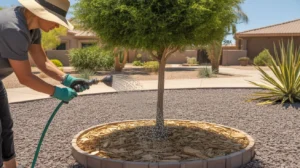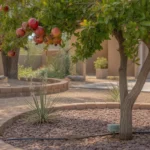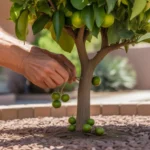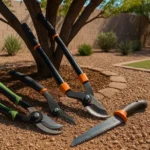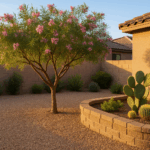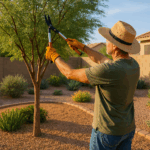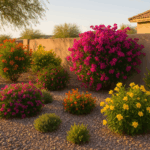Caring for desert trees during Queen Creek’s intense summer heat requires a thoughtful approach to ensure they stay healthy and vibrant. With temperatures soaring well above 100°F, it’s crucial to provide your trees with the right amount of water, mulch, and pruning to help them withstand the harsh conditions. By following these expert tips, you can keep your desert trees thriving all summer long.
Water Deeply and Efficiently
One of the most critical aspects of caring for desert trees in Queen Creek during the summer is proper watering. While it may be tempting to water your trees more frequently, it’s actually more beneficial to water deeply and less often. This encourages the roots to grow deeper into the soil, making the tree more resilient to drought and extreme heat.
To water your desert trees effectively, use a soaker hose or drip irrigation system to deliver water slowly and directly to the root zone. Aim to water your trees to a depth of 2-3 feet, which typically requires running the irrigation for 2-3 hours at a time. The frequency of watering will depend on the tree species, age, and soil type, but generally, mature desert trees in Queen Creek need deep watering every 7-10 days during the summer months.
When watering, be sure to keep the water away from the trunk of the tree to prevent rot and fungal growth. Instead, focus on watering the area beneath the canopy and slightly beyond the drip line, where the majority of the tree’s absorbing roots are located.
Mulch to Retain Moisture and Regulate Soil Temperature
Applying a layer of organic mulch around your desert trees is another essential step in protecting them from Queen Creek’s harsh summer conditions. Mulch helps retain moisture in the soil, reduces evaporation, and moderates soil temperature, creating a more favorable environment for root growth.
Use a natural, organic mulch such as wood chips, shredded bark, or compost, and apply a 3-4 inch layer around the base of the tree. Be sure to keep the mulch a few inches away from the trunk to prevent moisture buildup and potential rot. Extend the mulch to the drip line of the tree, or slightly beyond, to ensure adequate coverage of the root zone.
In addition to conserving moisture and regulating soil temperature, mulch also helps suppress weed growth, which can compete with your trees for water and nutrients. As the mulch breaks down over time, it adds organic matter to the soil, improving its structure and fertility.
Prune Strategically to Minimize Stress
While pruning is an important part of tree maintenance, it’s crucial to approach it carefully during Queen Creek’s hot summer months. Pruning removes foliage, which can reduce the tree’s ability to photosynthesize and produce the energy it needs to withstand stress. Additionally, pruning wounds can be more susceptible to sunburn and infestation during this time.
If pruning is necessary during the summer, focus on removing dead, damaged, or diseased branches, as well as any crossing or rubbing limbs that could cause injury to the tree. Avoid heavy pruning or shaping, as this can put undue stress on the tree during an already challenging time.
When pruning, always use clean, sharp tools to make precise cuts and minimize damage to the tree. Sterilize your tools between cuts, especially if you’re working on multiple trees, to prevent the spread of disease. If you’re unsure about how to prune your specific desert tree species, consult with a local arborist or refer to resources like “Prepping for Desert Tree Pruning” for guidance.
Monitor for Signs of Stress and Pests
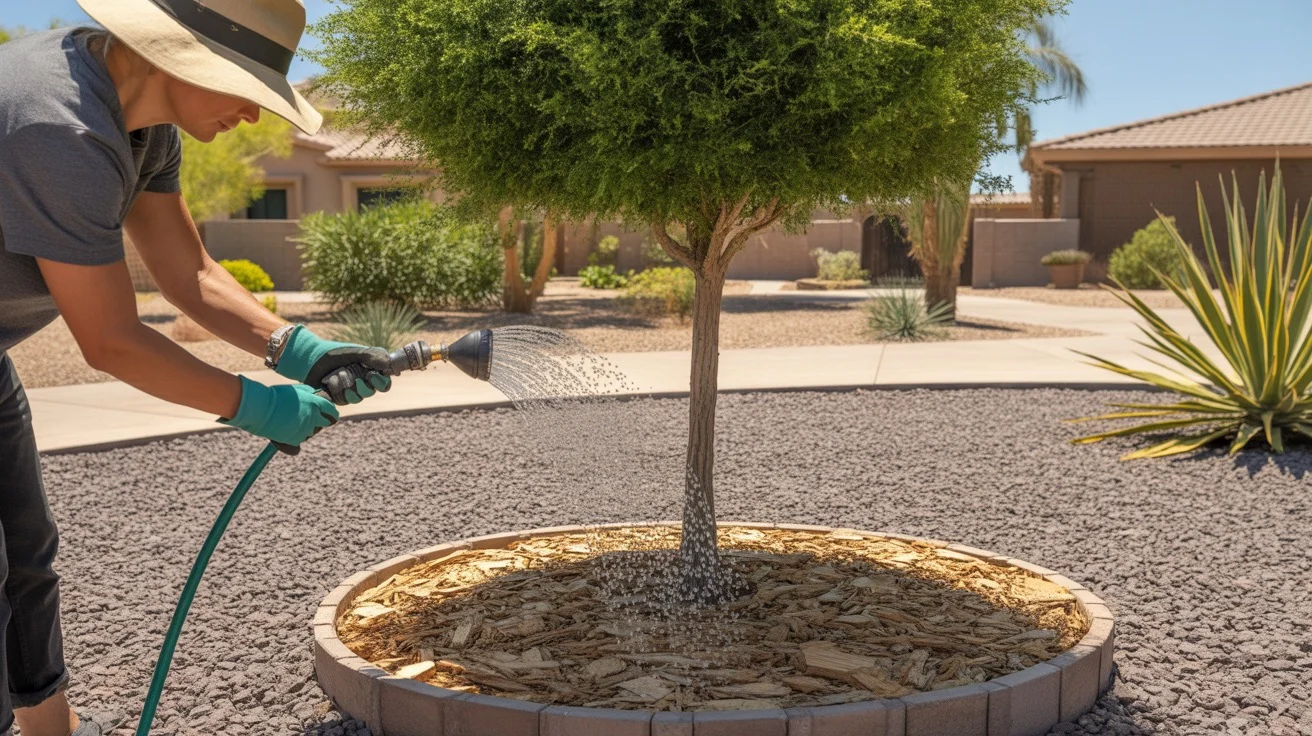
Even with proper watering, mulching, and pruning, desert trees in Queen Creek can still experience stress during the intense summer heat. Regularly monitor your trees for signs of distress, such as wilting, yellowing, or dropping leaves, as these may indicate that the tree needs additional care.
Pests can also take advantage of stressed trees during the summer months. Keep an eye out for common desert tree pests like spider mites, scale insects, and bark beetles. These pests can further weaken your trees and make them more susceptible to disease. If you notice any signs of pest infestation, consult with a local arborist or extension office for guidance on appropriate treatment options.
Remember, prevention is key when it comes to caring for desert trees in Queen Creek’s extreme summer heat. By providing your trees with the right amount of water, mulch, and strategic pruning, you can help them build resilience and stay healthy throughout the challenging season. With proper care and attention, your desert trees will continue to thrive and provide shade, beauty, and ecological benefits to your Queen Creek landscape for years to come.

